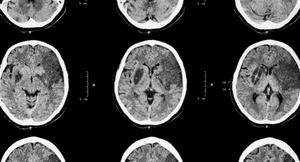Showing 36 posts in Medical Malpractice.
How To Prove Medical Malpractice, Birth Injury Claims

Medical malpractice claims are complex and contentious. On the plaintiff's side, there is a suffering victim or family who has put their trust in medical professionals only to suffer painful, traumatic, and sometimes life-changing consequences. On the other side is a healthcare provider or healthcare system fighting for their reputation and perhaps their livelihood. The stakes are high, and it is essential to be able to present a strong, evidence-backed case. More ›
ShareTen of the Largest Medical Malpractice Verdicts of 2022

2022 saw record-setting medical malpractice verdicts across the country. Juries have seen the pain and suffering caused by negligent healthcare providers, and are compensating innocent victims for both their financial and non-financial harm.
This list only includes cases that went to trial and highlights some of the largest medical malpractice verdicts from 2022. The majority of medical negligence cases are settled out of court, but the terms and settlement amounts are confidential and could not be included here. However, the medical malpractice attorneys at Morris James can guide you on the relevant factors in your case that could affect your right to compensation. Contact our experienced medical malpractice lawyers online or call us at 302.888.6857 for a free, no-obligation consultation. More ›
ShareBrachial Plexus Injuries FAQs

Brachial plexus injuries in infants are most commonly caused by trauma to the neck as it stretches away from the shoulders during birth. Unfortunately, these injuries can occur during the delivery of a baby and because of a physician’s medical malpractice. Though brachial plexus injuries are rare at birth, and while many brachial plexus injuries can heal on their own, a permanent brachial plexus injury can be devastating to the baby and his or her family members. This article discusses brachial plexus injuries and medical malpractice claims involving brachial plexus injuries caused at birth. More ›
ShareFailure to Diagnose Cauda Equina Syndrome FAQs

Cauda Equina Syndrome (CES) is a rare neurologic condition, but trained medical providers are required to understand the signs and symptoms associated with this medical emergency so that a timely diagnosis can be made. Unfortunately, when medical professionals fail to diagnose CES, or fail to make a timely diagnosis, a patient can suffer permanent, catastrophic injuries. When medical professionals fail to appropriately diagnose CES, they may be liable for medical malpractice. More ›
ShareUPDATE: Pennsylvania Supreme Court Expands Access to Courts for Medical Malpractice Cases
To expand court access for victims of medical malpractice, the Pennsylvania Supreme Court recently changed its venue rules for medical malpractice cases. Prior to this change, medical malpractice victims were required to file their case where their claim arose. Now, the new rules permit victims of medical malpractice to file their cases in any county in the state, subject to a few restrictions. This significantly broadens the ability of plaintiffs to pursue a case and serves to apply the same venue rules, regardless of the type of case. The rules will go into effect in January 2023. More ›
ShareShoulder Dystocia FAQs

Shoulder dystocia is a common cause of birth injuries. This article discusses medical malpractice claims involving shoulder dystocia, and answers common questions patients and their family members may have about shoulder dystocia, and the birth injuries it can cause. More ›
ShareCerebral Palsy FAQs

What is cerebral palsy?
Cerebral palsy refers to a group of neurologic disorders that impact a person’s motor skills and cognitive development. It typically presents with stiff muscles (called spasticity), uncontrollable movements (called dyskinesia), and/or poor balance and coordination (called ataxia). The most common form of cerebral palsy is called spastic cerebral palsy, where a person has increased muscle tone, making their muscles and difficult to move. Other types include dyskinetic cerebral palsy, where people cannot control the movement of their hands, arms, feet, legs, mouth, or tongue; ataxic cerebral palsy, where people have issues with balance, coordination, or writing; and mixed cerebral palsy, where people have symptoms of more than one type of cerebral palsy. Unfortunately, a byproduct of a cerebral palsy diagnosis can be significant cognitive delays and impairments. More ›
ShareFailure to Diagnose Medical Emergencies

Some medical conditions are considered medical emergencies because, without immediate medical treatment, the patient could die or suffer serious permanent injuries. Common examples of medical emergencies include heart attack, stroke, trauma resulting in significant bleeding or injury to an organ or limb, bowel obstruction, cauda equina syndrome, and pulmonary embolism. These conditions frequently appear in the emergency department, where staff should be trained to quickly diagnose and treat these and other medical emergencies. More ›
ShareFailure to Diagnose Cancer

Cancer is unfortunately a common medical condition that affects many people in this country. It affects children, adolescents, and adults. The types of cancer that affect each age group can vary widely. Cancer itself can also be slow-growing, fast-growing, or anything in between. Given the wide variety of cancers, the patterns of growth, and the patient’s characteristics, it is important for medical professionals to be aware of risk factors for, and signs and symptoms of, cancers so that they can diagnose them early, and treat them to minimize the chance that a person will suffer from cancer. More ›
ShareFailure to Diagnose Stroke

Despite continued medical advances, stroke remains a leading cause of death and disability in the United States. In fact, according to the CDC, every year more than 795,000 people in the United States have a stroke. A stroke can cause permanent brain damage, impacting an individual’s physical and cognitive functioning and, in some cases, can lead to death. More ›
ShareMedical Malpractice Claims Related To Electronic Fetal Monitoring

Electronic fetal monitoring (“EFM”) is used for most women during labor. EFM allows the medical providers to see how the baby is doing in response to the stresses of labor. It provides important information that the medical team uses to determine many things, including whether the plan for a vaginal delivery is no longer a safe option for the baby. This article discusses EFM, medical malpractice claims involving EFM, and answers common questions family members may have about EFM if their baby suffered a birth injury. More ›
ShareProlonged Labor

Before a woman is about to deliver her baby, she will enter into a process called labor. Labor refers to the period before delivery when the mother experiences a series of continuous and progressive contractions of the uterus. This causes the cervix to open (or dilate) and to thin (or efface). These changes to the cervix allow the baby to move through the birth canal, culminating in delivery. More ›
ShareFailure to Diagnose FAQs

What is a failure to diagnose?
A failure to diagnose generally occurs when a physician or other healthcare provider does not diagnose a patient’s current medical condition or makes the correct diagnosis but not within a timely manner. It may also happen when the healthcare provider misdiagnoses the patient, thereby preventing the correct diagnosis and treatment from occurring. This can lead to a patient’s injury getting worse or, in the worst case, becoming untreatable due to the delay. These errors can lead to physical and emotional suffering, and financial loss, for the patient. A healthcare provider’s failure to diagnose a medical condition can give rise to a legal claim for medical malpractice. More ›
ShareMedical Malpractice in Maryland

What is considered medical malpractice?
Under Maryland law, a medical professional commits medical malpractice by providing medical care that is inconsistent with the accepted standards of practice for similar health care providers. Simply because a medical professional did not act in accordance with generally accepted standards of practice does not mean that a patient has a valid medical malpractice claim. Likewise, simply because a patient is injured by a medical professional does not mean that the medical professional committed medical malpractice. If you suspect, however, that you suffered an injury, and if you believe that the injury was due to a medical professional’s inappropriate medical care, you may have a medical malpractice claim. More ›
ShareMedical Malpractice in Pennsylvania

What is considered medical malpractice?
As in most states, medical malpractice in Pennsylvania refers to a medical professional’s inappropriate conduct that is inconsistent with the generally accepted standard of care practiced by medical professionals and that results in injury to a patient. Not all failures to comply with the standard of care (also called a “breach” or “violation” of the standard of care) equate with medical negligence. Nor do all injuries to patients mean that a medical professional breached the standard of care. But, where the medical provider deviated from the generally accepted standard of care, and where the patient suffered an injury as a result, the patient may have a medical malpractice claim. More ›
Share

